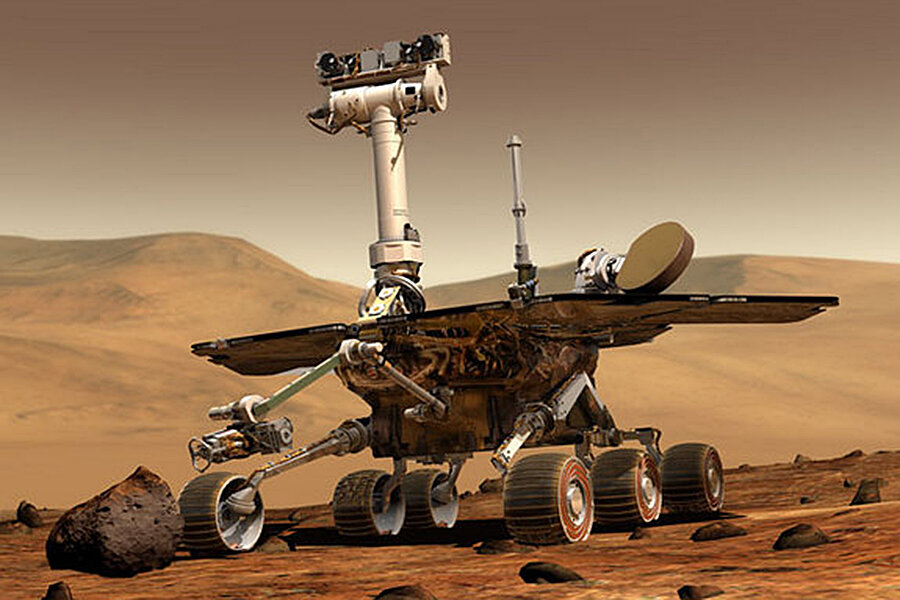NASA's rover mission on Mars completes 10 years
Ten years ago today, NASA dropped the first of two rovers onto the surface of Mars, kicking off a wildly successful mission that continues to beam home data about the Red Planet and its wetter, warmer past.
NASA's Spirit rover touched down on the night of Jan. 3, 2004 (Jan. 4 GMT), followed three weeks later by its twin, Opportunity. The two robots were originally supposed to explore Mars for 90 days, searching their disparate landing sites for signs of past water activity on the Red Planet.
Both rovers found plenty of such evidence and just kept chugging along, far outlasting their warranties. Spirit got stuck in a sand trap in 2010 and was declared dead a year later, but Opportunity continues to operate today and shows no signs of slowing down. [10 Amazing Mars Discoveries by Spirit & Opportunity]
"Opportunity is still in excellent health for a vehicle of its age," mission project manager John Callas, of NASA's Jet Propulsion Laboratory in Pasadena, Calif., said in a statement. "The biggest science may still be ahead of us, even after 10 years of exploration."
The discoveries made by the golf-cart-size Spirit and Opportunity over the years have fundamentally reshaped scientists' understanding of Mars and its dynamic history, rover team members say.
In 2007, for example, Spirit's crippled right front wheel dug a furrow in the red dirt, revealing deposits of pure silica, which forms when hot water reacts with rocks. The rover thus uncovered strong evidence for an ancient hydrothermal system, suggesting that at least some parts of Mars once had two key ingredients necessary for life as we know it: liquid water and an energy source.
Oppportunity has also made a number of big discoveries, with some coming after arriving at the 14-mile-wide (22 kilometers) Endeavour Crater in August 2011.
"When Opportunity got to the rim of Endeavour Crater, we began a whole new mission," mission principal investigator Steve Squyres, of Cornell University, said in a statement. "We found gypsum veins and a rich concentration of clay minerals. The clay minerals tell us about water chemistry that was neutral, instead of acidic — more favorable for microbial life, if any ever began on Mars."
NASA's car-size Curiosity rover, which landed inside the Red Planet's Gale Crater in August 2012, has taken such habitability investigations to the next level. Curiosity's observations have revealed that an area called Yellowknife Bay could indeed have supported primitive life billions of years ago, in a freshwater lake that measured perhaps 30 miles long by 3 miles wide (50 by 5 km).
Spirit drove a total of 4.8 miles (7.7 km) on the Red Planet during its operational life, while Opportunity has covered 24 miles (38.7 km) to date, NASA officials said. Opportunity holds the American record for off-planet driving distance and is creeping up on the international mark of 26 miles (42 km), which was set by the Soviet Union's unmanned Lunokhod 2 moon rover back in 1973.
Follow Mike Wall on Twitter @michaeldwall and Google+. Follow us @Spacedotcom, Facebook or Google+. Originally published on SPACE.com.
- Latest Mars Photos From Rovers Spirit & Opportunity
- Rover Tracks on Mars: Spirit and Opportunity | Video Show
- 7 Biggest Mysteries of Mars
Copyright 2014 SPACE.com, a TechMediaNetwork company. All rights reserved. This material may not be published, broadcast, rewritten or redistributed.








